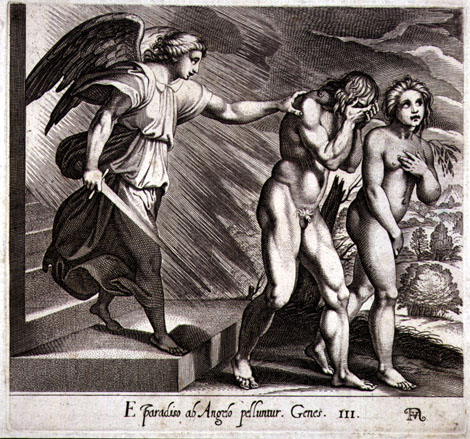This poem tells us an inspiring story and also teaches us an important lesson. It tells us of the unusual friendship between an Englishman and an Indian king. In the 19th century, the British administration and the rulers of India’s princely provinces were engaged in a tug of war for authority over their territories. They could not even see eye to eye. However, Pertab Singh and his English friend rose above their nationalities and valued each other for their similarity in vocation. They believed that all soldiers have the same faith and built up a great friendship on the basis of that bond.
Again in the 19th century, before leaders like Gandhiji and Nehru had started to speak out against the caste system, caste was thought to be an unchanging and eternal attribute of any Indian. Hence efforts had to be made to prevent intercaste mixing, and also to abide by the rules that maintained the purity of the upper caste. Only the people of certain lower castes such as the ‘doms’ were allowed to carry dead bodies. If an upper caste man chose to do so, he was liable to lose his caste and therefore to be ostracized by his fellow men.
However, when his English friend dies, Maharaja Pertab Singh chooses to do just this. He rises above such narrow beliefs as caste purity, and even defends his actions against the accusing words of the orthodox priests. This takes immense courage, even on the part of a king. He falls back on the bond that all soldiers have to justify his actions, and readers cannot help but be impressed by such a modern bent of mind in a 19th century Indian king.
Poetic Devices in A Ballad of Sir Pertab Singh :
Rhyme scheme:
If we divide this poem into units of 4 lines each, then each of those units would follow the same simple rhyme scheme, that is, ABCB.
Rhetorical devices:
Metaphor: This rhetorical device is used when a covert comparison is made between two different things or ideas. In this poem, the poet uses the device of metaphor in the 3rd line when he compares the red colour of Pertab Singh’s palace with that of a rose. He again uses it in the 7th line when he compares Pertab Singh’s passion with fire. He uses it once more in the 19th line when he compares death with a shadow.
Metonymy: This rhetorical device consists of the substitution of the name of an attribute or adjunct for that of the thing meant. In this poem, the poet uses the device of metonymy in the 8th line when he writes the word “steel” in place of “sword”, as the blade of a sword is made of steel.
Personification: This rhetorical device is used to bestow human qualities on something that is not human. In this poem, the poet uses the device of personification in the 11th line with respect to blood by giving blood the human ability to sing.
Zeugma: In this rhetorical device, a word applies to two others in different senses. In this poem, the poet uses the device of zeugma in the 64th line when he writes “God and my heart know well”.
Simile: This rhetorical device is used when an overt comparison is made between two different things. In this poem, the poet uses the device of simile in the 78th and 79th lines when he compares the faith of soldiers to the wide world, the free air and the pool of death.
Central Idea of A Ballad of Sir Pertab Singh :
An English rider comes to the palace of Maharaja Pertab Singh of Jodhpore and the two men develop a strong bond. They ride together and tell each other stories, and they form a great friendship on the basis of the common faith that all soldiers supposedly have. When the Englishman dies, Pertab Singh chooses to carry his coffin bearing the risk of losing his caste in the process. When the orthodox priests accuse him of the same, he defends his actions saying that humanity is above and beyond caste.
Themes of A Ballad of Sir Pertab Singh :
Unusual bond: In the 19th century, it was unusual to see Indians and their colonizers bonding. However, Pertab Singh being a modern man realized that all Englishmen are not evil. That is why he formed a great friendship with the Englishman who had come riding to his palace. They both rose above their narrow nationalism and bonded over the common faith that all soldiers share.
Liberal ideology: In the 19th century, caste purity was seen to be absolutely essential in India. Such responsibilities were greater when it came to a king for he was supposed to provide an example for the people of his kingdom to follow. Yet Maharaja Pertab Singh risked losing his caste to carry the coffin of his friends on his last journey. He even defended his actions before the orthodox priests saying that all men are descended from the same ancestors and hence they should not create divisions amongst themselves on the basis of such artificial criteria such as race or caste. This kind of liberalism is unique in a 19th century royal.
Tone of A Ballad of Sir Pertab Singh :
The tone of this poem is primarily one of defiance. From forming a friendship with an Englishman to risking the loss of his caste, everything Pertab Singh does is against the rules. And yet we cannot but admire him for his liberal bent of mind.
Conclusion: “A Ballad of Sir Pertab Singh” is a long poem, but a delightful one. Whether it is based on a true incident or not is doubtful. But the story it tells is inspiring. That is why readers have loved reading it. Suggested Reading: A Ballad of Sir Pertab Singh Summary
Keywords: A Ballad of Sir Pertab Singh Analysis, A Ballad of Sir Pertab Singh themes, A Ballad of Sir Pertab Singh critical analysis, A Ballad of Sir Pertab Singh Analysis poetic devices
Some online learning platforms provide certifications, while others are designed to simply grow your skills in your personal and professional life. Including Masterclass and Coursera, here are our recommendations for the best online learning platforms you can sign up for today.
The 7 Best Online Learning Platforms of 2022
- Best Overall: Coursera
- Best for Niche Topics: Udemy
- Best for Creative Fields: Skillshare
- Best for Celebrity Lessons: MasterClass
- Best for STEM: EdX
- Best for Career Building: Udacity
- Best for Data Learning: Pluralsight
















